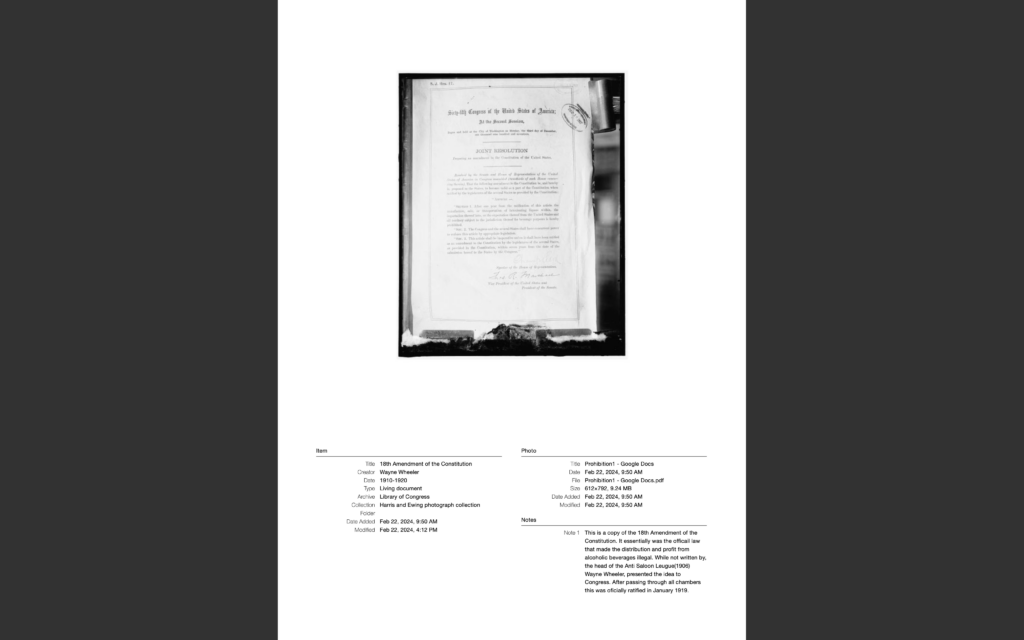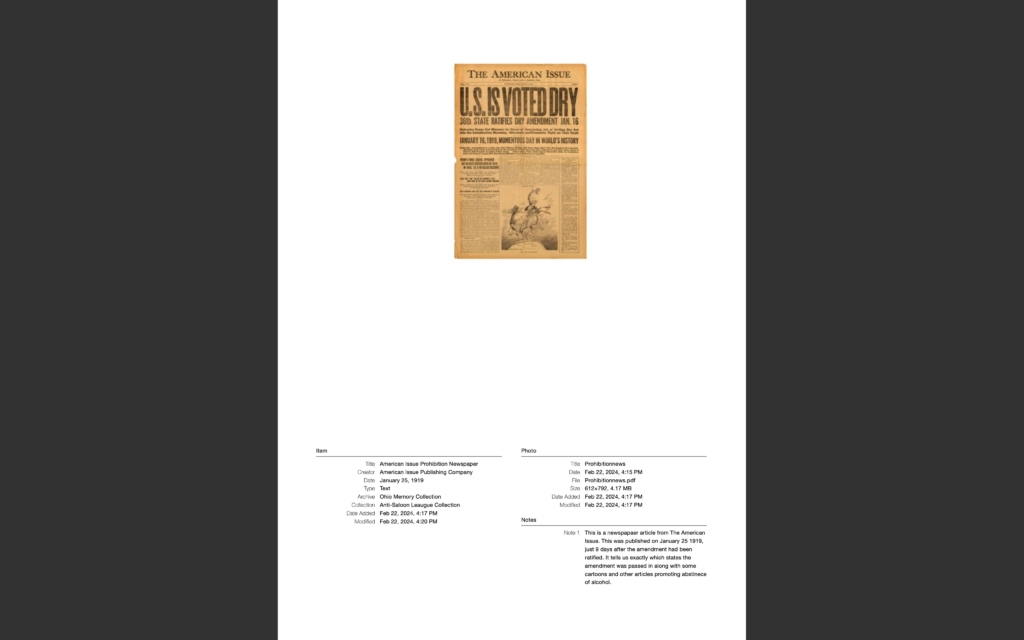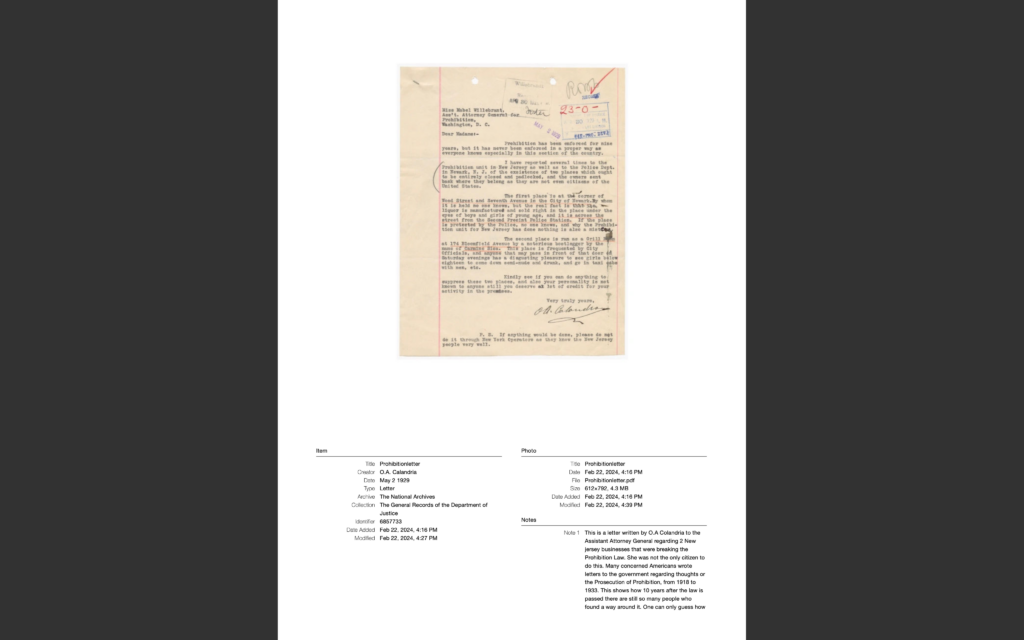Source 1: Brown, L. Ames. “Prohibition.” The North American Review 202, no. 720 (1915): 702–29. http://www.jstor.org/stable/25108648.
This article breaks down the timeline to show the progression of Prohbition throiughout America before and after the 18th Ammendment passed. It shows the escalation of the narrative that alcohol was the root of many problems in society and that temperance was the only way forward. The article also brings up an amazing point that even though the law was passed alcohol didn’t stop. People just found ways around it, essentially making the law lose its purpose after a while.
Source 2: Riffel, Brent E., and Ron Wolfe. “Prohibition.” In Arkansas in Ink: Gunslingers, Ghosts, and Other Graphic Tales, edited by Guy Lancaster, 94–97. Butler Center for Arkansas Studies, 2014. http://www.jstor.org/stable/j.ctt1ffjqm6.47.
This book chapter focuses on how Prohibition affetced Arkansas in particular. At first the concept piqued the interest of many, but then they realized with the rising population how much of an affect it had on politics and the economy. Farmers began producing and selling alcohol and made more of a profit than traditional agriculture. Politicians could win votes by voting against alcohol bans. This gives a more structured view on how a single state handled this controversial time.
Source 3

Source 4

Source 5

Final Refelction: Reading these sources about prohibition has reinforced what I already perceive about the topic. While the concept is just, given the state of society it was ultimately pointless. It made a dent in the supply and demand for alcohol, but to paraphrase Ames L. Brown “Prohibition did not prohibite.” People just found ways around it, or alternative means of production, for every 2 they caught there were probably another 10 they did not. There is also no way to prove that it had the effect on society it intended. An argument could be made that it did but other factors most likely played a part. The different sources gave me a better scope to view the policy. How it affected individual citizens and a singular state. The official documents also helped create a timeline of the effects, from 1919 to 1933 we see how it changed the American opinion on control over certain substances which eventually led to the institution of the 21st Amendment. While looking for these sources I also found that there are many official cites that allow you to access Primary sources, they also provide you with lots of information regarding the metadata. Most times that I’ve attempted to find sources online, I could not cite properly due to a lack of information, regarding archives or collection.
Leave a Reply